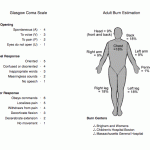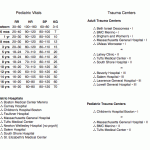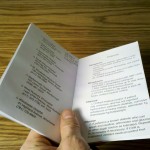Now and then you see someone with one of those little spiral-bound EMS “pocket guides.” They make sense for paramedics, who have drug dosages and other information-dense (and in some cases, rarely used) protocols that need remembering; but they always seemed a little silly for the EMT-B, who mostly needs to remember not to drop anyone.
There are a handful of things that would be useful to me in a reference, however, and therein lies the rub: preprinted field guides invariably consist 75% of what you already know and are missing 50% of what you actually need. For instance, when I moved two years ago, one of my main concerns was learning the different points-of-entry in the Boston metro area (trauma, STEMI, etc.), a service area which runneth over with so much healthcare that even your hairdresser might be an RN. But I’m not going to find that information in any book I can find on a shelf.
The answer? Homemade references! I made my own cheatsheet by laying out what I needed on the computer (I used Adobe InDesign, but a word processor would work), printing it in foldable handbook size, and gluing and stapling it together into a booklet. This fits unnoticeably in my back pocket and goes everywhere with me during my shift, and it works great — it’s full of exactly what I need and nothing else. My original one has been falling to pieces, so I just recently revised it and made up a new one. I’ve considered laminating it, but I don’t want to make it any thicker, and that would make it difficult to write on for any revisions.
I recommend making your own cheat sheet if you get a chance. You can check out mine here; here’s a couple sample pages as an example.
And the final product:



Recent Comments